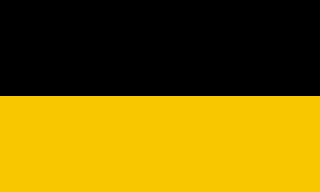
The Schauinslandbahn is a gondola lift in the Black Forest area of Baden-Württemberg, Germany. It links a lower station in the municipality of Horben, near the city of Freiburg im Breisgau, with an upper station near the summit of the Schauinsland mountain. The line is operated by VAG Freiburg, the city transport operator for Freiburg. The same company operates that city's tram and bus network, including bus route 21 that links the lower station of the Schauinslandbahn to the terminus of tram route 2 at Günterstal. [1] [2] [3]

A gondola lift is a means of cable transport and type of aerial lift which is supported and propelled by cables from above. It consists of a loop of steel cable that is strung between two stations, sometimes over intermediate supporting towers. The cable is driven by a bullwheel in a terminal, which is typically connected to an engine or electric motor. They are often considered continuous systems since they feature a haul rope which continuously moves and circulates around two terminal stations. Depending on the combination of cables used for support and/or haulage and the type of grip, the capacity, cost, and functionality of a gondola lift will differ dramatically. Because of the proliferation of such systems in the Alpine regions of Europe, the French language name of Télécabine is also used in an English language context.

The Black Forest is a large forested mountain range in the state of Baden-Württemberg in southwest Germany. It is bounded by the Rhine valley to the west and south. Its highest peak is the Feldberg with an elevation of 1,493 metres (4,898 ft). The region is roughly oblong in shape with a length of 160 km (99 mi) and breadth of up to 50 km (31 mi).

Baden-Württemberg is a state in southwest Germany, east of the Rhine, which forms the border with France. It is Germany’s third-largest state, with an area of 35,751 km2 (13,804 sq mi) and 11 million inhabitants. Baden-Württemberg is a parliamentary republic and partly sovereign, federated state which was formed in 1952 by a merger of the states of Württemberg-Baden, Baden and Württemberg-Hohenzollern. The largest city in Baden-Württemberg is the state capital of Stuttgart, followed by Karlsruhe and Mannheim. Other cities are Freiburg im Breisgau, Heidelberg, Heilbronn, Pforzheim, Reutlingen and Ulm.
Contents
At 3.6 kilometres (2.2 mi) in length, the line is reportedly the longest gondola lift in Germany. It was the first suspended cable car in the world to provide continuous operation of multiple cabins, as opposed to the shuttle style operation of the aerial tramway. [2] [4]

An aerial lift (US), also known as a cable car, is a means of cable transport in which cabins, cars, gondolas or open chairs are hauled above the ground by means of one or more cables. Aerial lift systems are frequently employed in mountainous territory where roads are relatively difficult to build and use, and have seen extensive use in mining. Aerial lift systems are relatively easy to move, and are and have been used to cross rivers and ravines. In more recent times, the cost-effectiveness and flexibility of aerial lifts has seen an increase of gondola lift being integrated into urban public transport systems.

An aerial tramway, sky tram,cable car, ropeway or aerial tram is a type of aerial lift which uses one or two stationary ropes for support while a third moving rope provides propulsion. With this form of lift, the grip of an aerial tramway cabin is fixed onto the propulsion rope and cannot be decoupled from it during operations.























